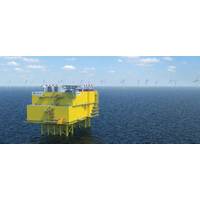
GE Vernova, Seatrium Ink TenneT Deal for 2.2GW North Sea Grid Link
offshore wind deployment and strengthen long-term energy security.The award marks the first German 2 GW-class project for the GE Vernova-Seatrium consortium under a five-year framework agreement with TenneT.The BalWin5 system will include an offshore converter platform, an onshore converter station in Bremen-Werderland, and a combined 325-kilometre cable route. Commissioning is planned for 2032.GE Vernova’s Electrification Systems division will deliver the complete HVDC technology and both converter stations, including control and protection systems designed to stabilize high-capacity power flows
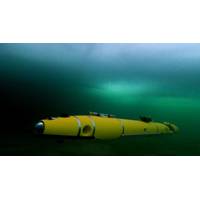
SeaMe Project to Leverage AUVs, AI to 'Stand Watch' in Offshore Wind Farms
a crucial role in the marine food chain.Further development of the AUV DeepLengIn SeaMe, the DFKI Robotics Innovation Center is further developing the autonomous underwater vehicle (AUV) “DeepLeng” to optimize it for monitoring offshore environments. To achieve this, the researchers in Bremen are equipping the AUV with a multimodal oceanographic sensor system capable of precisely measuring physical parameters such as water temperature, salinity, and oxygen content. These data are essential for sound ecological analyses, providing valuable insights into the living conditions within the
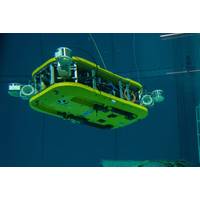
Tech File: Dual-Arm AUV Emerges from German Consortium
not only enables intuitive control and monitoring of the robot underwater but also ensures the smooth bidirectional flow of information with the plant operators and allows integration into existing business processes.The dual-arm AUV Cuttlefish is launched in the DFKI's Maritime Exploration Hall in Bremen. Photo Copyright: DFKI, Thomas FrankThe DFKI Robotics Innovation Center has successfully designed and built the AUV "Cuttlefish" in Mare-IT as an intervention AUV that can be freely positioned in the water column. The innovative AUV has two deep-sea gripping systems attached to its ventral

Kraken Announces $3.5m of Contract, Funding Awards
of $1.5 million, the customer’s fourth order of Kraken batteries.In addition, Kraken was awarded $2 million of funding awards across three projects. Work on these projects will be carried by Kraken’s acoustic signal processing team in Canada, Kraken’s AI and Machine Learning team in Bremen, Germany and Kraken’s subsea power team in Rostock, Germany.Execution of the contracts for deliveries of our SeaScout systems to the Danish and Polish navies continues and is on track and on budget. First shipments under these contracts will occur in Q4 this year

The Ocean's Microplastics Mess: Technology & Technique to Identify & Clean Up
microplastics in the Arctic, particles transported over large distances by the atmosphere and later returned to land through precipitation. The team, led by Dr. Melanie Bergmann and Dr. Gunnar Gerdts, conducted analyses on snow samples from regions in Germany such as Heligoland, Bavaria and Bremen, as well as the Swiss Alps and the Arctic. In each location, the snow contained high concentrations of microplastics, even in the most remote of areas (in the Arctic, samples contained up to 14,400 particles per liter). When analyzing sea ice from the Arctic Ocean, the amount and distribution of
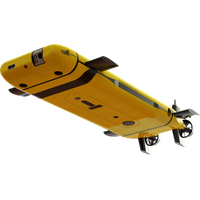
Bennett Joins Kraken Board
growth.”Kraken Robotics is a marine technology company dedicated to the production and sale of software-centric sensors, subsea batteries and thrusters, and underwater robotic systems. The company is headquartered in St. John’s, Newfoundland with offices in Dartmouth, N.S.; Toronto, Ont.; Bremen and Rostock, Germany; and Boston, Mass.“I am excited to join Kraken as the market for marine robotics is on a strong growth curve,” Bennett said. “The Kraken team has put together an impressive array of industry leading products and formed significant partnerships to propel the
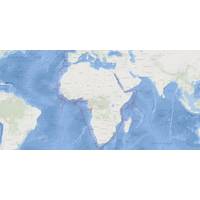
Fugro Starts Shallow Water Survey for 2Africa Fiber-Optic Cable Project
, Fugro has already expedited the cable engineering and manufacturing phase by providing multibeam echosounder data to the ASN project team “on the fly” during the first phase of the project," Fugro said.Malte Cesson, Fugro’s Commercial Manager for Marine Site Characterisation in Bremen, Germany, said: “We are proud and honored to be selected by ASN for this project, which in its base configuration will be one of the largest of its kind. The challenging scope of work is further complicated by Covid-19 and the associated protocols but our unrivaled strategic partnership with
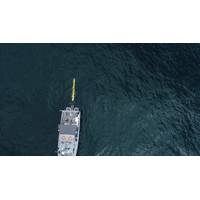
For the Royal Australian Navy, Technological Leap Starts Small
;The system also allows for change detection. If we found two objects on the bottom every week for a month, and then a third object shows up, maybe we need to check that out,” said Stephen.When mines are found and are to be destroyed, the SEA 1778 kit includes the Atlas Elektronik SeaFox (Bremen, Germany) expendable mine neutralization system, as well as the Rotinor (Stuttgart, Germany) Black Shadow diver delivery vehicle to transport divers to place detonation charges near mines, depending on the environment and tactical situation. The MAS Zengrange (Wellington, New Zealand) Command
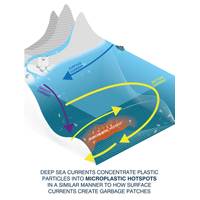
SCIENCE: Seafloor Microplastic Hotspots Controlled by Deep-sea Currents
this information the team were able to show how ocean currents controlled the distribution of microplastics on the seafloor.This research forms part of an international research project at the University of Manchester (UK), the National Oceanography Centre (UK), IFREMER (France) and the Universities of Bremen (Germany) and Durham (UK).This project is part of wider research by the Microplastics Research Group at the National Oceanography Center that aims to understand the extent and implications of microplastic pollution on the health of marine ecosystems: https://noc.ac.uk/science/microplastic
 December 2025
December 2025





